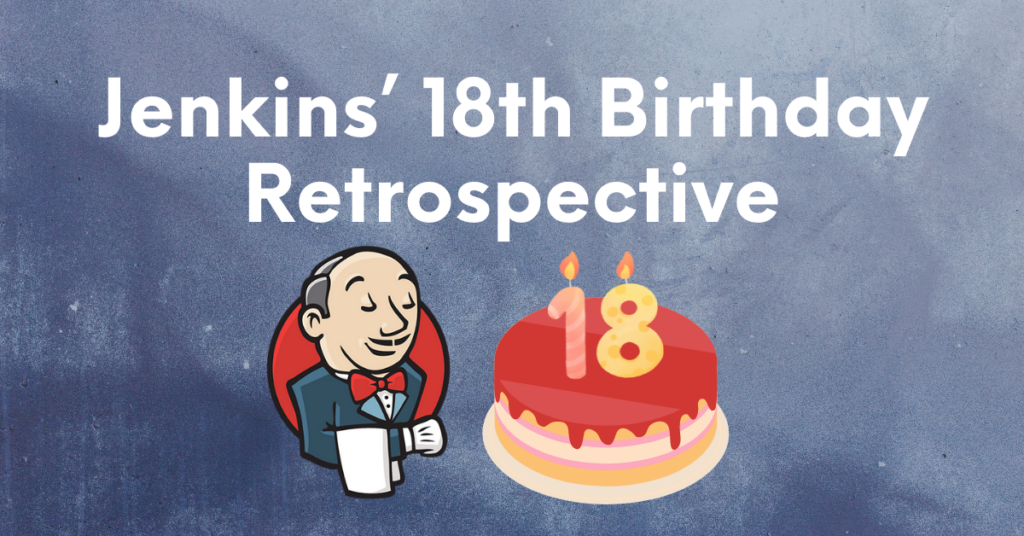Contributed by Kevin Martens, CloudBees
Jenkins is approaching its 18th anniversary, and to mark the occasion, let’s take a look back at some of the milestones since its inception in 2005. In addition to this history, we’ll look at what the September Long Term Support release and future hold for Jenkins.

Origins
Before it became Jenkins as we know it today, the project was called Hudson and began making its name as an open-source build-server from 2005 – 2007. Towards the end of 2010, there were discussions about the future of the project and how it should be handled. At this point, the project was renamed Jenkins, so that independence of the project would remain intact. The Jenkins project was able to retain all the original repositories and work that had been completed to that point and continues building from this today.
After the renaming, the Jenkins project took form and saw its community and contributions increase. Anyone interested can join the project and contribute, and the community wants everyone to succeed. This makes for a welcoming, positive, and productive experience whether you’re brand new to Jenkins, or an experienced developer.
Independence & Continued Improvement
After releasing Jenkins version 2 in 2016, Pipeline functionality was integrated and continues to provide users with a more simple, effective, and versatile way to create and execute pipelines. This would be the next big step for Jenkins development. Over 1,800 plugins have been added to the Jenkins site to help with various functions and connections. Additionally, if a user finds that the plugin they’re using is not being actively maintained, they can adopt the plugin and make sure that their work is not interrupted. Ideally, they would also be able to make sure the plugin stays up to date and functions as Jenkins evolves.
Around this time, Java 7 support was deprecated in favor of Java 8, which improved the security and scalability of Jenkins. Java 8 also provided increased functionality in regards to language and platform usage. This helped Jenkins solidify itself even further in the continuous delivery and open-source space.
Where Jenkins Is at Today
With the requirement of Java 11, the Jenkins project has performed numerous tests and considerations before making this move. Java 11 has been available since 2018 and has undergone serious vetting to make sure that environments will work as expected. It has also been tested on several plugins, ensuring that when users are updating, issues with the main Jenkins configuration are prevented.
Jenkins has also gone through a visual transformation. The forms, tables, navigation, and other aspects of the UI have been updated to feel more modern. Icons and progress bars are more intuitive and display their information clearly. These upgrades provide a better user experience that is continually iterating and adapting as technology changes.
Join the Jenkins Community
Over a million users interact with Jenkins regularly, and the move to Java 11 will make that experience even better! With Jenkins requiring Java 11, the Jenkins community will not get left behind in the open source world. All of the updates and improvements that have been developed in Java 11 will be part of Jenkins moving forward, and the Jenkins community should see the benefits upon upgrading.
The community is an integral part of Jenkins’ growth, providing feedback and potential solutions to topics that arise during usage. Be sure to upgrade your Jenkins environment and join the community, where everyone is welcome and empowered to be a part of Jenkins’ continued progress.